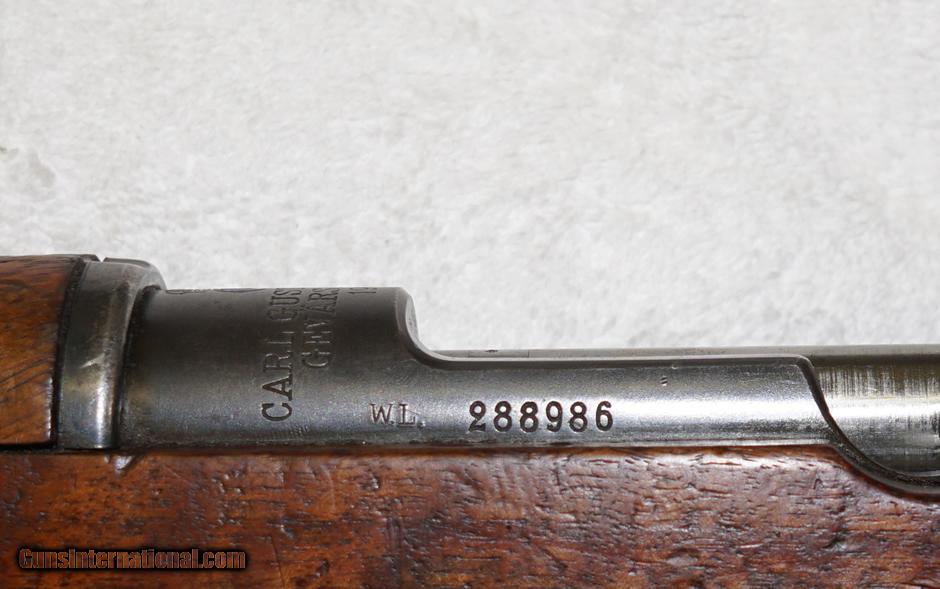

- #1896 swedish mauser serial numbers serial numbers
- #1896 swedish mauser serial numbers manual

The Swedish Mauser Rifles (Rev., 3rd ed.), 'For Collectors Only' series, North Cape Publications.Įxternal links Wikimedia Commons has media related to Swedish Mauser.

Military Mausers of the World (4th ed.), Krause Publications. Mauser Bolt Rifles, Brownell's Publishing. Crown Jewels: The Mauser in Sweden, Collector Grade Publications. ↑ Kehaya, Steve and Poyer, Joe, The Swedish Mauser Rifles, Tustin, California: North Cape Publications, Inc.↑ Schinke, Carsten - Die leichten schwedischen Infanteriegewehre Armee und Heimwehr - Journal-Verlag Schwendt Gmbh (1990) - page 59.General Information Rifle m/96(B) Caliber: 6.5mm Capacity: 5 rounds Weight: 4.5 kilo The rifle can be fitted with a bayonet.
#1896 swedish mauser serial numbers manual
Swedish Mauser Rifle Manual 1999 Anders J.
#1896 swedish mauser serial numbers serial numbers
This one was made in the year 1900 and has all matching serial numbers except for three.
↑ de Haas, Frank, Bolt Action Rifles, Northfield, Illinois: DBI Books, Inc. Early German made Oberndorf M96 Swedish Mauser in good condition. ↑ Jones, D: Crown Jewels: The Mauser in Sweden, pp. ↑ 'Mauser Bolt Rifles by Ludwig Olsen, 3rd edition, F. Mauser in 8×58mmR Danish Krag, the standard military rifle caliber in Sweden before the 6.5×55mm. Starting at the end of the 20th century the FSR allowed the use of competition/target rifles that are not based on the Swedish Mauser receiver. The CG competition/target rifles complied and evolved with the technical and dimensional FSR rulings then imposed for FSR shooting events. The CG 63 was further developed into the CG 73 / CG 74, also called m/74, and finally the CG 80 competition/target rifle. The triggers were adjusted and smoothed to match quality and the rifles got diopter and globe sighting lines (from several Swedish manufacturers) and target stocks. The vertical thumb piece was removed from the bolt to improve lock time. The CG 63 rifle was based on an existing receiver to which a new heavy, non-stepped free-floating target barrel was fitted. The FSR strives to keep the costs of participating in their shooting events reasonable, so the FSR rulings restrict the unchecked use of very expensive highly specialized target rifles, ammunition and other gear. These competition/target rifles were used by members of the Swedish Volunteer Sharpshooting Movement Frivilliga Skytterörelsen (FSR) and are known to be very accurate for their price. The Swedish Army used this rifle as the Gevär 6. Many m/1894 carbines and m/1896 rifles were successfully converted by Carl Gustafs and Norma after World War II into the CG 63 Competition/Target Rifle chambered in 6.5×55mm and 7.62×51mm NATO. Square post front, U notch rear iron sights or telescopic sight M/38 short rifle, m/41 sniper rifle, m/94 carbine.







 0 kommentar(er)
0 kommentar(er)
